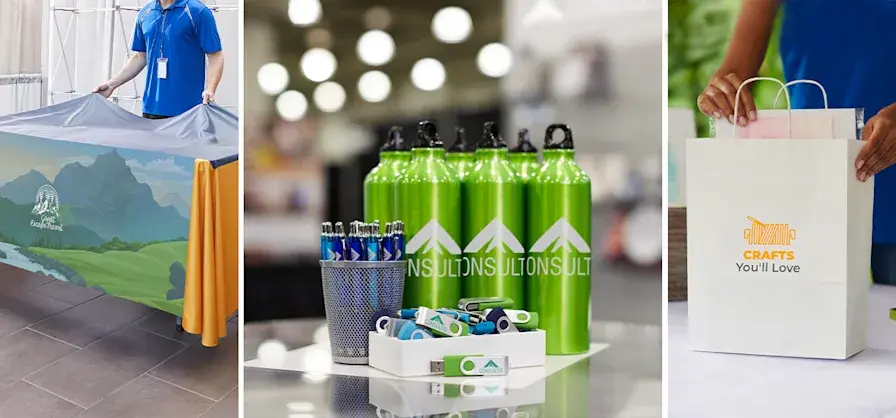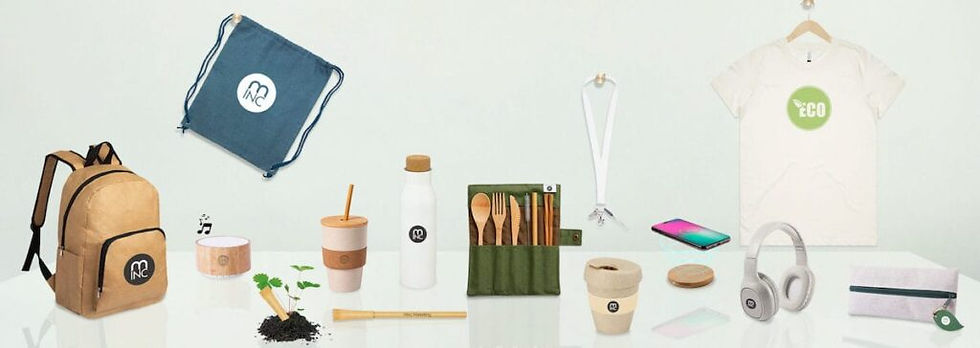Choosing the Right Promotional Products for Your Brand
- Pro-Branding
- Apr 7
- 5 min read
Choosing the right promotional products is paramount to a successful trade show strategy. While the digital marketing efforts discussed previously are crucial for pre- and post-show engagement, tangible promotional items offer a powerful, immediate connection with potential clients. These items serve as lasting reminders of your brand, extending the impact of your trade show presence far beyond the event's conclusion. However, selecting the right promotional products requires careful consideration; a poorly chosen item can be a wasted expense, even damaging to your brand image. This section guides you through the process of selecting promotional products that resonate with your target audience, align with your brand identity, and deliver a positive return on investment.
The first step is understanding your target audience. Who are you trying to reach? What are their demographics, interests, and lifestyle? A promotional item that appeals to one demographic might be completely irrelevant to another. For example, a high-end pen might be a perfect gift for a corporate executive, but it would be a wasted expense for a younger, more tech-savvy audience. Understanding your audience's preferences is crucial for selecting items that will be appreciated and remembered. Consider conducting market research, analyzing customer data, and even conducting surveys to gain a clearer picture of your target audience’s preferences. This research will inform your choices and significantly increase the likelihood of a successful promotional campaign.
Next, align your promotional products with your brand image. The item you choose should reflect your brand's personality, values, and overall aesthetic. A luxurious brand might opt for high-quality leather goods, while a more casual brand might choose items like branded t-shirts or reusable water bottles. Consistency is key; the promotional item should reinforce your brand messaging and create a cohesive brand experience. Inconsistent messaging can confuse your potential clients and diminish the impact of your overall brand strategy. This means carefully considering the quality, design, and overall presentation of your chosen product to ensure it aligns seamlessly with your brand's existing identity.
The type of product you choose is also crucial. The options are virtually limitless, ranging from classic items like pens and keychains to more innovative choices like personalized power banks, branded tech accessories, or sustainable, eco-friendly products. Consider the practicality of the item. Will your target audience actually use it? A promotional item that ends up gathering dust on a shelf is a wasted investment. Choose items that are both useful and memorable. Practicality increases the chances that the item will be kept and used regularly, serving as a consistent reminder of your brand.
Think about the messaging on your promotional item. Avoid cluttering the item with excessive information. A simple, elegant logo is often more effective than a busy design filled with text. The goal is brand recognition, not information overload. Remember that the primary goal is subtle brand reinforcement, not a detailed product catalog printed on the item. Less is often more when it comes to promotional products.
Beyond practicality and branding, consider the cost-effectiveness of your promotional items. While high-quality products are generally preferred, it's important to balance quality with affordability. Determine a budget beforehand and explore various options within that range. Don't compromise on quality but also avoid overspending on items that won't yield a significant return on investment. Compare prices from different suppliers, negotiate bulk discounts, and explore alternative sourcing options to optimize your spending. Remember that cost-effectiveness doesn't always mean the cheapest option. A higher-quality, more impactful item might justify a slightly higher price if it leads to more significant brand awareness and lead generation.
Case studies of successful promotional product strategies can provide valuable insights. One example is a technology company that distributed branded power banks at a trade show. The power banks were not only practical and useful, but they also subtly reinforced the company’s brand through a stylish design and subtle logo placement. The high utility and memorability of the power banks resulted in significantly increased brand awareness and engagement. This strategy outperformed other approaches that used less practical or memorable items, illustrating the value of careful product selection.
Conversely, a company that distributed inexpensive, poorly made promotional items experienced a negative impact. The low quality of the items inadvertently reflected poorly on the company's brand, undermining their attempts to build a positive brand image. This highlighted the crucial role of quality control and careful selection in avoiding negative brand associations.
Another successful example involved a sustainable clothing company that partnered with a non-profit organization and donated a portion of the proceeds from the sale of its branded tote bags to the charity. This strategy not only promoted the company's brand but also highlighted its commitment to social responsibility, resonating strongly with its environmentally conscious target audience. This combined approach significantly increased brand loyalty and broadened the audience beyond the immediate trade show attendees.
In contrast, a less successful approach involved a company that distributed a large quantity of inexpensive promotional items with overly cluttered designs. The items were essentially ignored, and the company failed to see a return on their investment. The chaotic design failed to convey the company’s brand message effectively and ultimately diluted the overall brand image.
The key takeaway is that successful promotional product strategies are strategic and intentional, focusing on quality, relevance, and brand consistency. It's an investment in long-term brand building, and careful planning significantly improves the chances of positive results. Remember to track the effectiveness of your promotional products. Monitor how often your items are used and how often your brand is mentioned in connection with the item. This ongoing evaluation allows you to refine your strategy for future events and maximize your return on investment. The data collected from post-show surveys and social media monitoring can further enhance your understanding of how effective your promotional items were in achieving your marketing objectives.
By combining insightful market research with a deep understanding of your brand and target audience, you can select promotional products that generate a powerful, lasting impression, significantly enhancing your trade show success and fostering long-term brand loyalty. This intentional selection process, combined with the digital strategies already discussed, creates a comprehensive approach to trade show marketing, maximizing your impact and return on investment. The lasting impression created by thoughtfully selected promotional products bridges the gap between the excitement of the trade show and the continued growth of your business well after the event concludes. Don't underestimate the power of a well-chosen promotional item; it can be a crucial element in your overall trade show marketing strategy.
Almendarez, M (2024) Trade Show Domination: How to Master Your Next Trade Show, 979-8310684294, Independently Published.









Comments